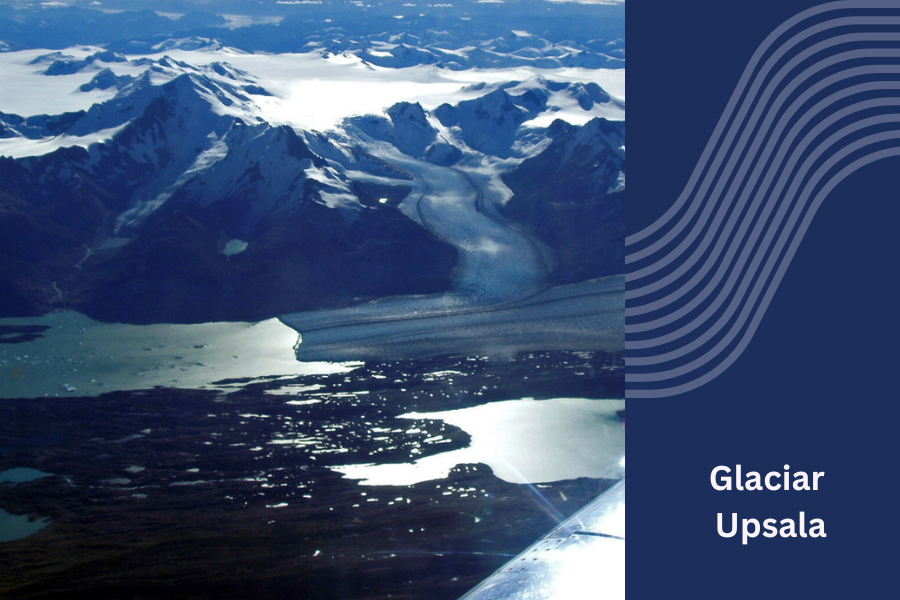Upsala Glacier: The blue giant of the Patagonian ice
The Upsala Glacier, located in a remote region of the Los Glaciares National Park in Argentinean Patagonia, is a true force of nature. With its 850 km2 of ice, this huge outlet glacier or “alpine” glacier is one of the largest in the southern Patagonian continental ice field, second only to the Viedma Glacier. Its enormous blue walls, more than 50 meters high, impress anyone who manages to reach its slopes.
An ice monster in constant motion
Like the famous Perito Moreno, the Upsala is a glacier that is constantly advancing due to the enormous accumulation and weight of ice from the Andean fields. With an advance rate of 0.5 to 2 meters per day, this colossal river of ice moves inexorably eastwards from the high peaks of the Andes.
Its main glacier tongue is around 60 km long and has an average width of 5.5 km at its narrowest point. In its front or rear upper reaches, which are more than 10 km wide, the Upsala shows all its majesty. There, its towers and blue ice walls, more than 50 meters high, rise majestically above the icy waters of Lake Guillermo and Lake Upsala.
Exploring the promontory of the Blue Giant
The colossal dimensions of Upsala are best explored on hikes and trekking tours on the paths along the lakes that it feeds with its meltwater. The cheapest option is the 8 km long Lake Guillermo Viewpoint Trail, which offers a panoramic view of the imposing ice front.
For the most demanding trekking enthusiasts, the trail to Upsala Camp is the best experience. On its 31 km round trip, you cross a large part of the glacier tongue to the foot of the glacier’s end front. A unique journey that connects you with the frozen heart of Patagonia.
Sailing to the heart of the ice
Another exciting way to get to know the foothills of the Upsala Glacier is to sail the icy waters of Lake Upsala and Lake Guillermo. These expeditions with motorized boats or catamarans lead directly to the impressive glacier front.
When sailing on Lake Upsala, you can disembark and take a short walk on the ground to get a closer look at the huge walls of the “blue giant”. You can also often see huge icebergs breaking on its slopes and creating a huge roar in the water.
Finding insurmountable Andean peaks
Exploring the area around the Upsala Glacier is not just about glacier experiences, however. It also offers the opportunity to admire some of the most inaccessible Andean peaks in Argentinean Patagonia, such as Cerro Cono and Torres Cuadradas.
These huge rocky mountains, permanently covered in snow and ice, are imposing guardians of the Andes. They are almost inaccessible destinations that have only been conquered by a few extreme mountaineering expeditions.
The kingdom of eternal ice
The most impressive thing about a visit to this remote region of Los Glaciares Park is the idea of immersing yourself in a real kingdom of eternal ice. From the surrounding hiking trails or while navigating the glacial lakes, you can see impressive ice masses that continue to grow and are fed by the same snow drifts and ice fields from which the Upsala was formed.
With an area of 16,800 km2, the South Patagonian continental ice field is one of the largest glacier masses discovered after Antarctica and Greenland. Its bluish layers of ice, which have accumulated over thousands of years, cover a large part of the Andean peaks and create polar landscapes.
At the foot of the imposing Upsala Glacier, surrounded by this infinite world of ice, dominion and the Patagonian wind, you lose yourself in the immensity of the purest and most remote glacial nature. An experience of intimate connection with the incomparable power and strength of the great Patagonian glaciers.


